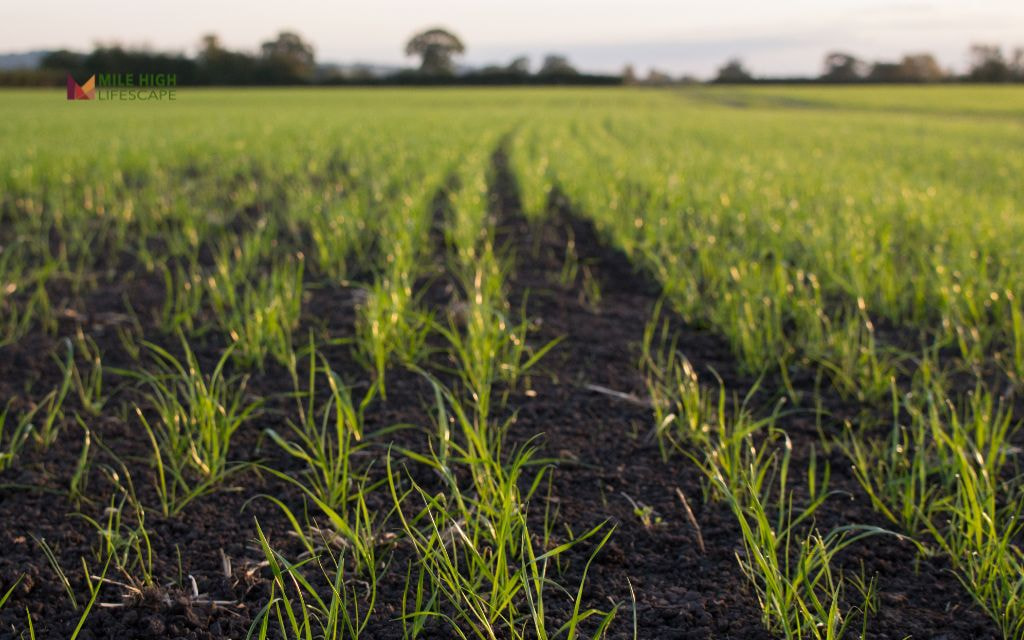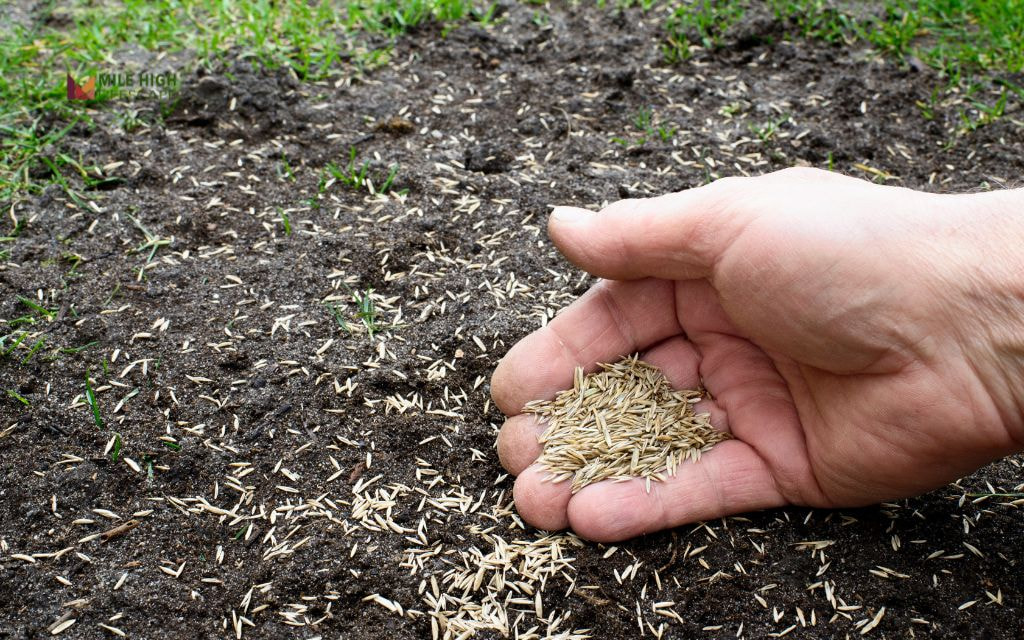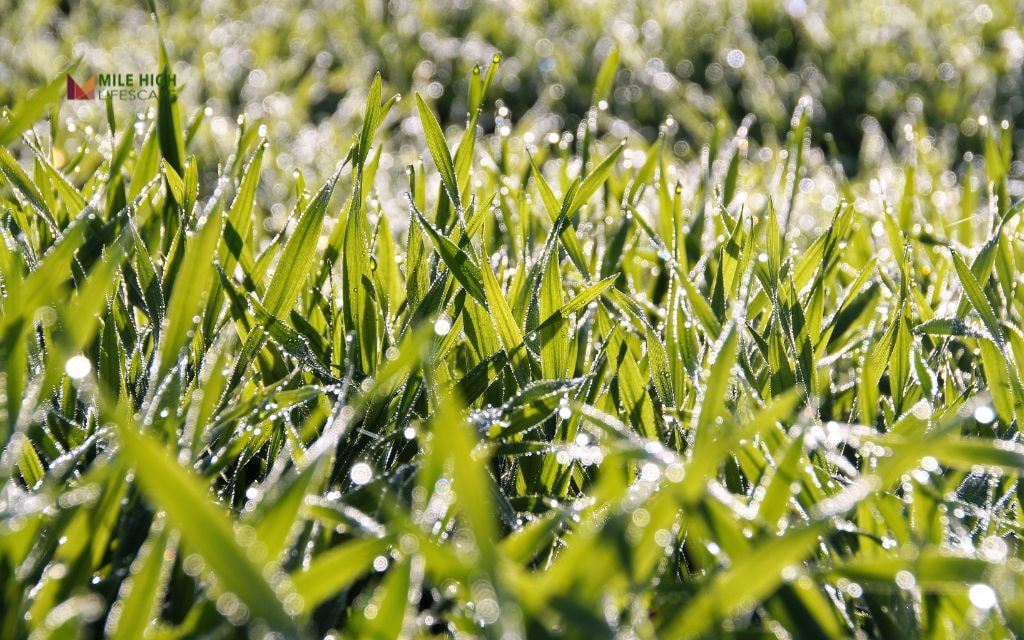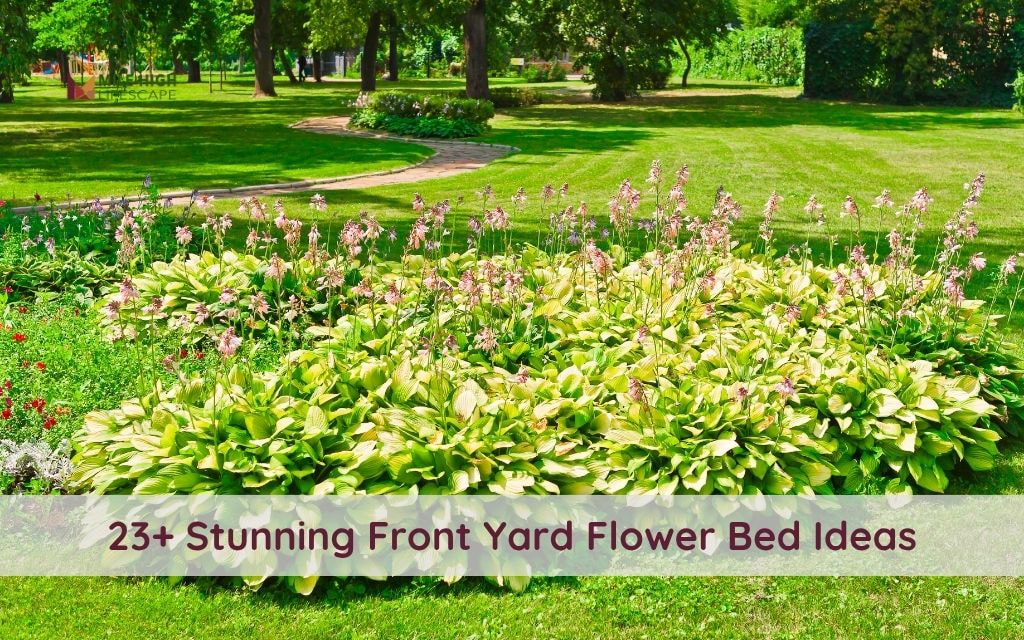Seeding a lawn, rather than installing sod, offers numerous benefits for Colorado residents. A properly seeded lawn develops deeper root systems, displays greater drought resistance, and can be customized with grass varieties specifically adapted to your property’s unique microclimate.
Additionally, seeding is typically more cost-effective than sod installation, allowing homeowners to establish larger areas without breaking the budget.
This comprehensive guide will walk you through the optimal timing for seeding, help you select the most appropriate grass varieties, provide step-by-step preparation and seeding techniques, and outline essential post-seeding care to ensure a thriving lawn for years to come.
Best Time to Seed a Lawn in Denver
Timing is perhaps the most critical factor for successful lawn seeding in Colorado. For Denver residents, late summer to early fall (mid-August through September) represents the ideal seeding period for cool-season grasses.
During this time, soil temperatures remain warm enough to support rapid germination while cooling air temperatures reduce drought stress on emerging seedlings. The reduced weed competition and typically moderate precipitation during this period create optimal conditions for establishment before winter dormancy.
Spring seeding (April to May) provides a secondary opportunity if you missed the fall window.
However, spring seeding faces challenges including increased weed competition, potentially heavier precipitation that can wash away seeds, and the need to establish before summer heat arrives. Successful spring seeding typically requires more attentive watering and weed management.
| Season | Best Time to Seed | Benefits |
| Late Summer | Mid-August to early October | Optimal soil temperature, better moisture retention, fewer competing weeds, longer establishment period before winter |
| Spring | April to May | Faster initial growth, good alternative if fall was missed, requires more vigilant watering |
Selecting the Right Grass Types for Seeding a Lawn in Denver
Choosing appropriate grass varieties is crucial for creating a lawn that thrives in Colorado’s challenging environment.
Cool-season grasses are generally recommended for Denver’s climate due to their ability to thrive in our temperature ranges and recover from periodic drought conditions. The following varieties have proven particularly successful:
Kentucky Bluegrass
This remains the most popular choice for Denver lawns, prized for its rich blue-green color and excellent self-repair capabilities.
Thanks to its rhizomatous growth habit, Kentucky bluegrass can recover from damage naturally by spreading to fill in bare patches. While it requires more water than some alternatives, newer cultivars have improved drought tolerance.
Kentucky bluegrass typically takes 14-21 days to germinate and forms dense, attractive turf suitable for both high-visibility areas and active use spaces.

Fine Fescues
Fine Fescues (including Hard, Red, and Chewings varieties) excel in shaded areas where other varieties struggle. Their fine leaf texture creates an elegant appearance, and they require significantly less water and fertilizer than Kentucky bluegrass.
Fine fescues germinate quickly (7-14 days) and maintain color during drought periods better than most alternatives. These varieties are ideal for areas with irrigation limitations or significant tree canopy coverage.
Perennial Ryegrass
With the fastest germination rate (5-7 days) among cool-season grasses, perennial ryegrass provides quick establishment and excellent wear tolerance.
It performs well in mixed-seed applications alongside Kentucky bluegrass, where it provides rapid ground coverage while slower-germinating species establish.
Modern ryegrass varieties offer improved disease resistance and drought tolerance compared to older cultivars.
Pro Tips:
- When selecting seed, consider using blends that combine complementary varieties rather than relying on a single species. For example, a mix of Kentucky bluegrass, perennial ryegrass, and fine fescue.
- Avoid warm-season grasses like Bermuda or Zoysia that struggle with Colorado’s cold winters where temperatures frequently drop well below freezing for extended periods.
Preparing for Seeding a Lawn
Proper preparation creates the foundation for successful seeding. Colorado’s clay-heavy soils and compaction issues require particular attention during the preparation phase.
- Mow your existing lawn extremely short (1-2 inches) if you’re overseeding into an established area. This reduces competition from existing grass and allows seeds better access to soil. Remove clippings if they’re particularly heavy or form mats that could prevent seed-to-soil contact.
- Rake thoroughly to remove debris, dead grass, leaves, and other material that might prevent seed from reaching the soil surface. For particularly poor lawn areas, consider using a dethatching machine if thatch exceeds ½ inch in thickness.
- Aerate the soil using a core aerator that removes plugs of soil rather than just puncturing the surface. This critical step addresses Colorado’s prevalent soil compaction issues, allowing roots to penetrate more easily and improving water infiltration.
- Level the soil by filling low areas and addressing drainage issues. Proper grading ensures even water distribution and prevents pooling that can drown young seedlings.
- Test the soil to determine pH and nutrient deficiencies. Most Colorado soils have a naturally high pH (typically 7.5-8.0), which can affect nutrient availability. While difficult to permanently alter this pH, understanding your soil’s composition helps determine proper amendment strategies.
- Amend the soil based on test results. For most Denver lawns, incorporating organic matter improves soil structure and water retention. Add 3-5 cubic yards of quality compost per 1,000 square feet, working it into the top 4-6 inches of soil when possible. For overseeding, applying a thin layer (¼ inch) of compost after aeration provides benefits without burying existing turf.
How to Plant Lawn Grass Seed: Step-by-Step Guide
Once preparation is complete, it’s time for seeding a lawn. Proper seeding technique ensures optimal germination and establishment. Follow these detailed steps for successful seeding in Colorado’s unique conditions.
- Select the right seed blend: Choose high-quality seed appropriate for your specific conditions. For sunny areas, consider Kentucky bluegrass blended with perennial ryegrass. For shaded locations, fine fescue varieties should comprise at least 30-40% of your mixture.
- Calibrate and use a broadcast spreader: Divide your seed into two equal portions. Apply half in one direction, then apply the remaining half in a perpendicular pattern. This cross-directional approach ensures more uniform coverage than a single pass.
- Rake lightly after spreading to improve seed-to-soil contact without burying seeds too deeply. Seeds should be incorporated just beneath the surface – approximately ⅛ to ¼ inch deep for most cool-season grasses.
- Roll the area using a lawn roller filled to about one-third capacity with water. This gentle pressure further enhances seed-soil contact without compacting the soil excessively.
- Apply starter fertilizer with higher phosphorus content to promote root development. Look for formulations like 18-24-12 applied at rates recommended on the packaging (typically 3-4 pounds per 1,000 square feet).
- Water immediately after seeding, applying enough moisture to wet the top 1-2 inches of soil. This is critical for germination success. Apply water gently to avoid seed displacement – using a sprinkler with a fine mist setting or a spray nozzle with a “shower” pattern.
- Cover with mulch in areas prone to erosion or particularly exposed to sun and wind. A thin layer of weed-free straw (approximately one bale per 1,000 square feet) or specialized seed mulch products helps retain moisture and moderate soil temperature fluctuations.

Post-Seeding Lawn Care
The critical establishment period after seeding requires diligent attention, particularly given Colorado’s challenging climate conditions.
Proper aftercare during the first 4-8 weeks significantly impacts long-term lawn health and drought resilience.
- Water consistently: In Denver’s dry climate, newly seeded areas typically require light irrigation 2-4 times daily during the first 10-14 days. Apply just enough water to keep the surface consistently moist without creating runoff or puddles.
- Avoid foot traffic: Keep people, pets, and equipment off newly seeded areas until the grass has been mowed at least three times. In high-traffic households, consider temporarily fencing seeded areas or creating designated pathways to protect developing turf.
- Fertilize appropriately: Apply a starter fertilizer at seeding time, then make a second application of balanced fertilizer approximately 4-6 weeks after seedlings emerge. This second application supports continued root development before winter dormancy (for fall seedings) or helps strengthen plants before summer heat stress (for spring seedings).
- Monitor for thinning spots and overseed as needed. Addressing these spots promptly with additional seed prevents weed encroachment and ensures uniform establishment. For small areas, hand-seeding followed by light soil coverage works effectively.
- Begin proper mowing when grass reaches approximately 3½ inches tall, cutting to a height of 2½-3 inches. Never remove more than one-third of the blade length in a single mowing.
- Manage weeds carefully: Avoid applying herbicides to newly seeded areas until after the lawn has been mowed at least four times.
- Gradually reduce irrigation frequency as the lawn matures, but increase duration to encourage deeper rooting. By approximately 8-12 weeks after seeding, your new lawn should begin transitioning to a normal watering schedule appropriate for established turf in Denver’s climate.
Common Lawn Seeding Mistakes to Avoid in Denver
Successfully establishing a new lawn in Colorado’s challenging environment requires avoiding several common pitfalls that frequently lead to disappointing results.
Seeding at the wrong time
Planting too early in spring when late freezes remain possible can kill emerging seedlings. Similarly, seeding too late in fall (after mid-October) gives insufficient establishment time before winter.
Cool-season grasses need approximately 45-60 days of good growing conditions before facing severe temperature extremes.
Overseeding too densely
Applying seed at rates significantly above recommendations creates counterproductive competition among seedlings.
This leads to weaker overall establishment as plants compete for limited resources. The resulting overcrowded seedlings become more susceptible to disease, particularly damping-off fungi common in Colorado.
Inadequate soil preparation
Skipping or minimizing the critical aeration step prevents proper root development in Colorado’s dense clay soils. Similarly, failing to remove debris or excessive thatch prevents good seed-to-soil contact. Proper preparation accounts for approximately 80% of seeding success.
Inconsistent watering
Both underwatering and overwatering create problems in newly seeded areas. In Denver’s arid climate, allowing the soil surface to dry completely even for a few hours can significantly reduce germination rates.
Conversely, excessive irrigation promotes disease and can physically wash away seeds, particularly on sloped areas.
Using inappropriate grass varieties
Selecting grass types poorly suited to Colorado’s climate sets up long-term maintenance challenges.
For example, using high percentages of Kentucky bluegrass in heavily shaded areas or attempting to establish warm-season varieties like Bermuda grass at Denver’s elevation typically leads to disappointing results.
Applying weed control products too early
Many pre-emergent herbicides prevent grass seed germination just as effectively as they prevent weed seed germination.
Similarly, post-emergent products applied to young seedlings often cause significant damage. Generally, wait until after the fourth mowing before applying any herbicides.

Neglecting soil amendments
Failing to incorporate organic matter before seeding reduces water-holding capacity and nutrient availability in Denver’s naturally poor soils. Compost or other quality organic amendments substantially improve germination rates and early establishment.
Improper mowing during establishment
Cutting new grass too short or waiting until it’s excessively tall before the first mowing damages young plants and can lead to thinning. Similarly, using dull mower blades creates additional stress during a critical developmental period.
Call a Professional for Seeding a Lawn
While many homeowners successfully seed their lawns, certain situations warrant professional assistance for optimal results. Recognizing when to enlist expert help saves time, money, and frustration.
At Mile High Lifescape, our comprehensive seeding services address Denver’s unique lawn challenges through specialized equipment, regionally-adapted seed blends, and expert knowledge of local growing conditions. Our professional approach ensures successful establishment while saving you time and effort.
Contact us for a customized lawn seeding assessment at (303) 877-9091.
Conclusion
Seeding a lawn in Colorado requires understanding our region’s unique challenges and adapting techniques accordingly.
By selecting appropriate timing, choosing regionally-adapted grass varieties, preparing soil thoroughly, and implementing proper aftercare, you can establish a resilient lawn that withstands Denver’s climate extremes.
Mile High Lifescape provides expert lawn seeding services tailored specifically to Denver’s unique conditions. Whether you tackle this project yourself or enlist professional assistance, applying these region-specific principles significantly improves your chances of success.
For professional consultation or seeding services, contact our team at (303) 877-9091.
Frequently Asked Questions (FAQs)
Can you just sprinkle grass seed on the lawn?
While you can overseed an existing lawn by sprinkling seed, results improve dramatically with proper preparation. For successful overseeding in Denver, mow existing grass short, remove thatch, aerate the soil, then apply seed. This ensures seed-to-soil contact necessary for germination in our arid climate.
What month is best to put grass seed down in Colorado?
Late August through early October provides optimal conditions for seeding lawns in Colorado. This timing allows seeds to germinate in warm soil while developing during cooler fall temperatures, establishing strong root systems before winter dormancy. If you miss this window, April to early May offers a secondary opportunity.
How do I prepare ground for seeding my lawn?
Prepare Denver’s clay soil by first removing debris and vegetation, then aerating thoroughly to reduce compaction. Add 1-2 inches of quality compost and till to a depth of 4-6 inches. Level the area, removing stones and filling low spots. Allow soil to settle after light watering before seeding.
Can I just throw grass seed on top of dead grass?
Throwing seed on dead grass yields poor results, particularly in Colorado’s dry climate. Dead grass creates a barrier preventing seed-to-soil contact essential for germination. Remove dead material through dethatching, prepare the soil properly, then apply seed for successful establishment.
Does putting grass clippings on bare spots help grass grow?
Grass clippings provide minimal benefit for bare spots and may actually impede new growth by preventing seed-to-soil contact. For bare spots in Denver lawns, loosen soil with a garden rake, apply appropriate seed, cover lightly with quality topsoil, and maintain consistent moisture until established.







